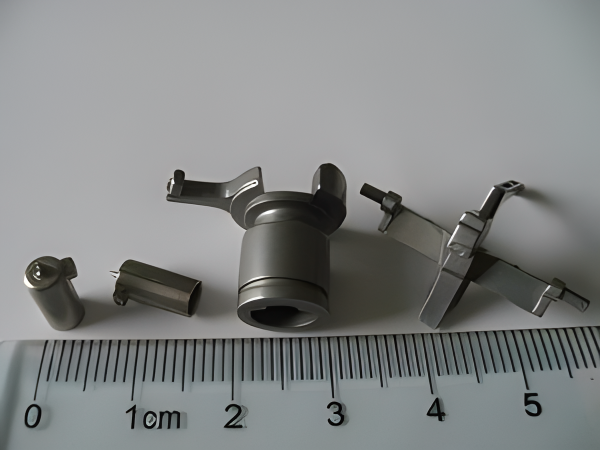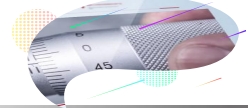Introduction
Designers in the metals industry are pretty much like music composers. They mix and match form, function, and durability, creating a masterpiece that depends a lot on their choice of materials. It’s all about knowing when to highlight mechanical strength and when to play up chemical stability for the best outcome. MIM17-4PH, a top-notch stainless steel, really shines in this complex world of metal design.
This blog post serves as an in-depth analysis of MIM17-4PH stainless steel, focusing on its properties, applications, and the novel Metal Injection Molding (MIM) process. Packed with insights for industry specialists, this resource seeks to demystify MIM17-4PH and guide designers through the subtleties of employing this material in exceptional creations.

What is MIM17-4ph Stainless Steel
MIM 17-4 PH represents a martensitic, precipitation-hardening stainless steel, conforming to the AISI 17-4 PH standard. This material is distinguished by its synergistic blend of mechanical properties and corrosion resistance capabilities..
17-4 PH stainless steel is highly valued for its combination of strength, hardness, and corrosion resistance. It’s particularly favored in industries such as aerospace, dentistry, medicine, and electronics, thanks to its unique composition of iron, nickel, copper, and chromium. Specific heat treatments enhance its properties, allowing it to achieve up to 43 HRC in hardness and impressive strength and ductility metrics. This makes it ideal for various high-stakes applications, thanks to its ability to be precisely tailored through heat treatment.
Chemical Composition and Standards
| Balance | 15.5- 17.5% | 3.0- 5.0% | 3.0- 5.0% | 0.15- 0.45% | <0.07% | <1.0% | <0.3% | <0.04% | <0.03% | <1.0 | <0.1 | <0.1 |
|---|---|---|---|---|---|---|---|---|---|---|---|---|
| Fe | Cr | Ni | Cu | Nb | C | Mn | Mo | P | S | Si | O* | N* |
MIM 17-4PH stainless steel is a martensitic precipitation-hardening alloy based on the AISI 17-4 PH standard.
It generally consists of 15.5-17.5% Chromium, 3.0-5.0% Nickel, and 3.0-5.0% Copper, with a maximum of 1.0% Silicon and 1.0% Manganese.
The carbon content is maintained at a minimal level, typically not exceeding 0.07%, to augment the material’s resistance to corrosion.
The density of the material post-heat treatment is approximately 7.7 g/cm³.
Standard compositions specify a range of elements to ensure uniform performance and meet international standards such as ASTM A564, AMS 5604, and AMS 5622.
Common Aliases and Identifications
Sometimes referred to as alloy 630, MIM17-4PH is well-recognized in the industry. Its various designations stem from different industry standards and providers. Keeping this nomenclature in mind helps pinpoint the precise alloy in material sourcing.
Properties and Characteristics
The substance of MIM17-4PH lies in its ensemble of exceptional properties that cater to diverse industrial requirements.The tensile strength of heat-treated Metal Injection Molding (MIM) 17-4PH can achieve up to 1186 MPa (172,000 PSI), accompanied by a yield strength of 1089 MPa (158,000 PSI).
This material exhibits an impact strength of 140 J (100 ft-lb) and possesses a hardness level that, while subject to variation based on the heat treatment applied, typically resides in the vicinity of 33 HRC.The elongation percentage, which indicates ductility, is around 10%.

Magnetic Properties
In its hardened state, MIM17-4PH is magnetic and finds applications in electromagnetic machinery and components requiring magnetic response.
Wear Resistance and Corrosion Resistance
The formidable wear resistance of MIM17-4PH, when coupled with its ability to fend off corrosion in a wide range of environments, makes it an ideal choice for marine equipment, chemical processing plants, and any application confronting severe conditions.
Duplex Structure and Its Implications
The ‘duplex’ structure—comprising austenite and martensite phases—results from the precipitation-hardening process and contributes to the mechanical strength and corrosion resistance. This dual-phase microstructure is the hallmark of MIM17-4PH’s performance.
Applications
MIM is used in a wide range of industries, including automotive, aerospace, medical, electronics, and more. It is particularly useful for producing small yet complex components that require high strength and precision.

Heat Treatment
The heat treatment of MIM 17-4PH stainless steel is key to its mechanical properties. It starts with solution annealing at 1900°F-1950°F for 30 mins to 1 hour, dissolving alloying elements, followed by air-cooling to prevent phase precipitation. Then, precipitation hardening at about 900°F strengthens the material. This treatment boosts strength and hardness, ensuring toughness and ductility, customizable for different applications.
This process endows MIM 17-4PH with its high strength, corrosion resistance, and excellent mechanical properties, making it ideal for demanding applications.
Effects on Mechanical and Physical Properties
Each step of the heat treatment regime imparts changes in the microstructure, which are reflected in the mechanical and physical properties of the final product. By controlling these processes, designers can fine-tune the material to their application’s precise needs.
Manufacturing with MIM And Benefits
Metal Injection Molding is a manufacturing process that offers a myriad of benefits for creating intricate shapes with high precision. It combines the design flexibility of plastic injection molding with the strength and durability of metal.
- Design Flexibility: MIM allows for complex geometries during production, including thin walls, undercuts, and internal cavities
- High Precision: With tolerances as tight as ±0.3%, MIM is a highly precise manufacturing process.
- Cost-Effective: Mass production is possible with MIM, making it an economical choice for large quantities.
- High corrosion resistance: MIM17-4PH’s corrosion resistance properties are preserved during the manufacturing process, making it an ideal choice for a wide range of applications.
The engineering attributes of MIM 17-4PH are adaptable to suit the precise demands of diverse applications. It’s pivotal to grasp that these attributes are interconnected. Enhancing one attribute may necessitate a compromise in another.
As an illustration, a preference for greater stiffness may result in diminished pliability. It’s imperative to find an equilibrium between the requirements in one aspect and the concessions in others.
MIM 17-4PH is particularly advantageous in scenarios where conventional machining approaches are impractical, especially when the material’s mechanical integrity is of utmost importance.
Conclusion
Empower your designs with the resilience and versatility of MIM17-4PH stainless steel. As a professional MIM manufacturer, we’re here to help you harness the potential of this exceptional material. Contact us for expert guidance and to explore the full symphony of possibilities with MIM17-4PH. Let’s innovate together!


